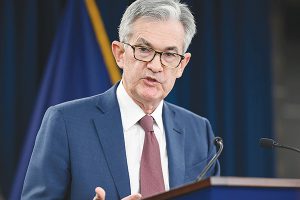Financial conditions have tightened in the past three weeks, with stocks dropping, corporate credit yield spreads widening and mortgage rates rising back to almost 14-year highs. If the data continues to show inflation is moderating, it could be enough to help convince Federal Reserve Chair Jerome Powell and his central bank colleagues to only institute a modest interest-rate increase when they meet in two weeks — with one big caveat.
In order for that to happen, investors would need to suppress their obsession with “buying the dip.†The S&P 500 Index is now 14 trading days and 9.2% into its fifth mini-drawdown of the year. The first four lasted from 10 to 36 trading days and zapped 9% to 16% off the benchmark’s value from peak to trough. So, this slump is already within the range at which a brief reversal is possible, if not necessarily imminent. Will traders poke the hornet’s nest before the Fed’s September 20-21 policy meeting?
Measures of financial conditions track more than just equities, but stocks have been the most visible source of defiance as the Fed has tried to curb demand to tame the highest rates of inflation in four decades. Monetary policy works in part through financial markets, as the combination of higher borrowing costs and lower asset prices make consumers and businesses less inclined to spend. Although the Fed doesn’t explicitly target financial conditions, members of the rate-setting Federal Open Market Committee keep a close eye on them: “I certainly was not excited to see the stock market rallying after our last Federal Open Market Committee meeting†in late July, Federal Reserve Bank of Minneapolis President Neel Kashkari told Bloomberg’s Odd Lots podcast .
Conditions have been heading in the Fed’s desired direction lately, helped along by a nudge from Powell.
 The Gulf Time Newspaper One of the finest business newspapers in the UAE brought to you by our professional writers and editors.
The Gulf Time Newspaper One of the finest business newspapers in the UAE brought to you by our professional writers and editors.
